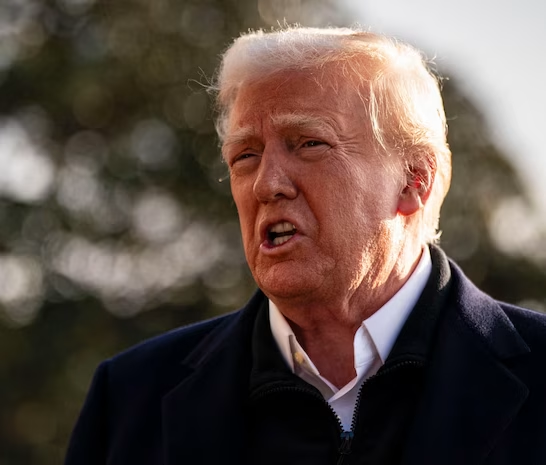The concept that the President-elect of the United States, Donald Trump, would be interested in purchasing Greenland on multiple occasions has caused a commotion in Denmark and throughout the rest of Europe.
It is important to note that this is not the first time that Trump has made the notion. The first time he attempted it in 2019, he was unsuccessful. On the other hand, this has not prevented him from making another attempt. Once again, Trump is acting in a manner that is reminiscent of a handsome man gazing at a beautiful woman who is in high demand.
In August 2019, during his first term as President of the United States, Donald Trump made his initial expression of interest in purchasing Greenland, which is the largest island in the world and also the autonomous region of Denmark. Reportedly, Trump brought up the concept on many occasions with his advisors and even gave instructions to his White House counsel to investigate the mechanics of a transaction of this nature.
Mette Frederiksen, the Prime Minister of Denmark, referred to the concept as “absurd” after it was revealed, and the media and social media platforms responded to it with a mixture of humour and incense.
It was then that President Trump decided to postpone a state visit to Denmark that had been arranged in response to Prime Minister Frederiksen’s rejection of his “offer.” This action brought to light the extent to which Trump was truly serious about the offer.
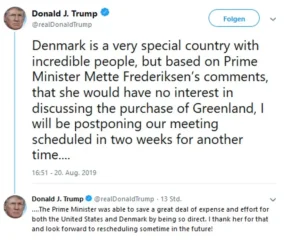
The question that needs to be taken into consideration, however, is why Donald Trump expresses such a strong desire for Greenland. Should we consider this to be a well-thought-out strategic advice or merely a whimsical and careless statement made by Trump, whose reputation for being carefree precedes his name?
The purpose of this post is to attempt to comprehend his action.
Exist any new plans for the United States to acquire Greenland?
There were many people who thought that the idea of purchasing Greenland was completely out of the ordinary; nonetheless, it was not completely unique, nor was it devoid of any strategic purpose.
During an interview with ABC News, Tom Høyem, who served as Denmark’s minister to Greenland from 1982 to 1987, expressed that there has been a sporadic occurrence of interest in purchasing Greenland “in American politics.”
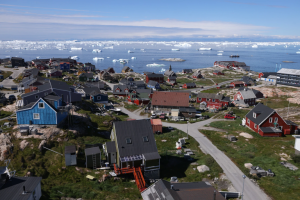
Since before World War II, when Denmark sold the Danish West Indies, which are now known as the United States Virgin Islands, to the United States for $25 million in 1917, the purchase of Greenland has been a topic of discourse, according to Høyem, who contributed all of this information in his interview with ABC News.
President Trump Reiterates His Expansionist Threats
President-elect Donald Trump has been expressing his desire to acquire Greenland over the course of the past several weeks. He has also been discussing the possibility of retaking control of the Panama Canal and incorporating Canada into the United States as the “51st state.”
Additionally, Donald Trump did not commit to denying the possibility of employing military force in order to achieve his geographical goal.
Despite this, European leaders Olaf Scholz and Jean-Noël Barrot ridiculed his proposals. On the other hand, Greenland Prime Minister Mute Egede rejected the concept by posting a message on Facebook that, when translated, implies that Greenland belongs to the United States. We have never been and will never be available for purchase by anyone. Our fight for independence, which has been going on for a year, must not be lost. We must, however, maintain our willingness to work together with others…”
Once more, despite the fact that Trump insists that the occupation of Greenland is necessary for the sake of “national security,” European officials have cautioned him that any unlawful attempt to obtain control of the enormous Arctic island will be faced with military force, and that the European Union has the right to defend its territory without interference.
The Trip to Greenland that Donald Trump Jr. Taking
It was on Tuesday when Donald Trump Jr., the son of the President-elect, had a brief journey to Greenland, which coincided with the announcement that Trump Sr. had made to own the island.
“Greenland will benefit tremendously if, and when, it becomes part of our Nation,” he posted on the social networking platform Truth Social on Monday. He included the following statement: “We will protect it, and cherish it, from a very vicious outside World.” PLEASE RESTORE THE GREATNESS OF GREENLAND!

(On Tuesday, January 7, 2025, a jet carried by Donald Trump Jr. touches down in Nuuk, Greenland. The Associated Press’s Emil Stach
After leaving Greenland on his father’s private jet, which he referred to as Trump Force One, Trump Jr. explained on his podcast titled “Triggered” that he was not going to buy Greenland, despite the fact that he stated that he enjoyed his time there.
But what is Trump’s motivation for wanting Greenland?
1. The Importance of Geopolitical Situations
As the landmass that lies between North America and Europe, Greenland holds a strategically significant position in the Arctic area. Greenland’s location is of tremendous strategic relevance to the United States of America since the Arctic is becoming a focal point for global power rivalry as a result of melting ice and new sea lanes.
Nations are competing for control of increasingly available resources and shipping lines in the Arctic, which is where the island serves as a gateway to the region.
Through the Thule Air Base, which is an essential location for missile defence and early warning systems, the United States already ensures that it has a military presence in Greenland.
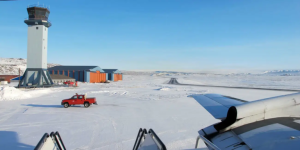
The United States military would be able to exert more control and surveillance over the Arctic region if they were to acquire Greenland, which would reinforce its footing in the region. While Russia and China are increasing their activities in the Arctic, including the construction of military sites and the pursuit of resource extraction, this is of utmost importance.
Natural Resources, Number Two
In addition to rare earth minerals, oil, gas, and precious metals, Greenland is abundant in a variety of natural resources. Particularly important for the development of modern technologies like smartphones, electric vehicles, and renewable energy systems are components that are classified as rare earth elements.” When it comes to rare earth imports, the United States is primarily dependent on China; however, securing Greenland’s resources might help lessen this dependence considerably.
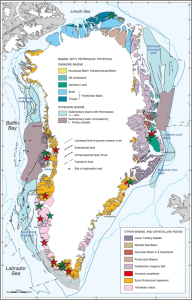
The geological map of Greenland, simplified by Henriksen (2008), displaying basement terrains and sedimentary basins
Furthermore, as a result of climate change, Greenland’s ice sheets are melting, which could result in a greater portion of the country’s resource-rich territory being made available for exploration and the extraction of resources. Greenland was most likely seen by Trump as a long-term investment with tremendous economic potential. Trump is known for his emphasis on energy independence.
3. Possibilities about trade
Changes brought about by climate change are causing significant changes to the Arctic terrain, which brings about both challenges and opportunity. Ice is melting, which is opening up new shipping routes, such as the Northwest Passage. These new shipping routes have the potential to cut global shipping distances and prices for the entire world, while also being beneficial to the United States of America to a greater extent.
When it comes to navigating and possibly dominating these burgeoning trade routes, the United States would have a strategic edge if they controlled Greenland.
More of Greenland’s land is becoming accessible for development, resource exploitation, and scientific investigation as a result of climate change, which is causing the ice to melt and disappear. It is possible that President Trump considered Greenland to be a very valuable asset in light of the environmental changes that have taken place.
4. Examples of Historical Precedents
There is no new information regarding the possibility of the United States acquiring Greenland. Immediately after the United States of America purchased Alaska from Russia in 1867, they contemplated the possibility of gaining Greenland and Iceland. Greenland was a strategic asset during the early phases of the Cold War, and President Harry Truman made an offer to Denmark in 1946 to purchase it for one hundred million dollars in gold. The United States continued to keep a presence on the island through the Thule Air Base, despite the fact that Denmark denied the offer.
Thomas Jefferson and William Seward were two examples of influential presidents who made land acquisitions that had a significant impact on their respective countries. It is possible that Trump saw himself as following in the footsteps of these figures. One possible interpretation of his legacy is that he considered the purchase of Greenland to be a significant accomplishment.
5. Repercussions, Geopolitical in Nature
This interest in Greenland by Trump brought to light deeper developments in the geopolitical landscape of the Arctic. There is a growing competition among governments for influence and riches in the Arctic region as the rate of climate change quickens and the region becomes more accessible.
It has become a focal point for discussions on sustainable development and environmental preservation that the Arctic Council, which is an intergovernmental forum comprised of Arctic nations, has become. Conflicts between large nations, on the other hand, pose a risk to the region’s ability to work together.
6.Expansions in the Arctic by Russia and China are being countered by the United States’ Arctic strategy.
The Russian Federation has been aggressively expanding its military and commercial activity in the Arctic region, including the reopening of outposts that date back to the Soviet era and the deployment of modern weaponry. Under the United Nations Convention on the Law of the Sea (UNCLOS), it has also asserted its right to a significant chunk of the seabed in the Arctic.
However, China has declared itself a “near-Arctic state” and has been investing in Arctic infrastructure and resource projects. This is despite the fact that China is not a nation that is located in the Arctic. The “Polar Silk Road” is being developed as part of its Arctic policy in order to make it easier for businesses to conduct business in the region.
The United States, which was relatively late to create a coherent strategy for the Arctic region, is finally recalibrating its attention on the Arctic region, which holds both economic and military significance for it. This is demonstrated by the White House’s plans that centre on Greenland, which are being implemented by President Trump.
A stronger position in the Arctic and an enhanced ability to oppose the influence of Russia and China will be provided to the United States by the acquisition of Greenland.
